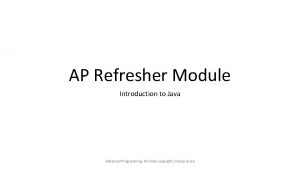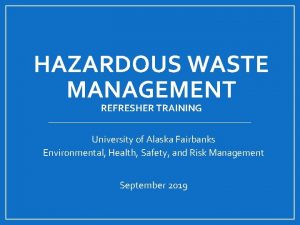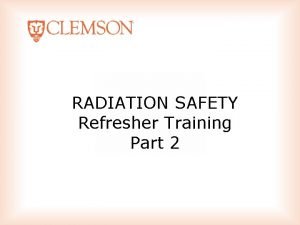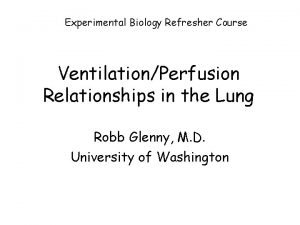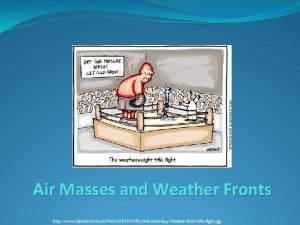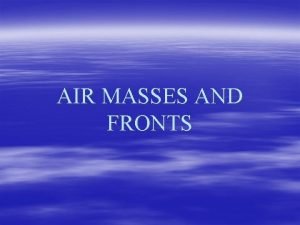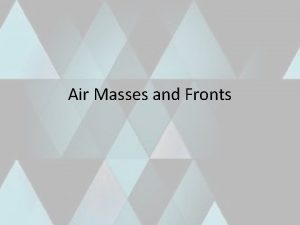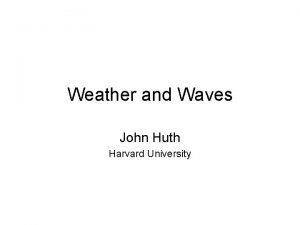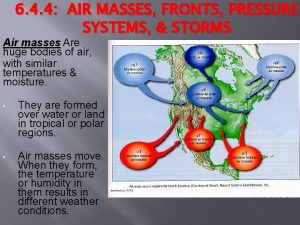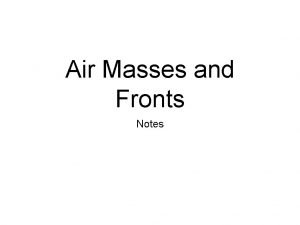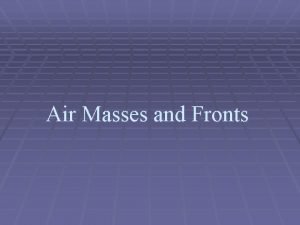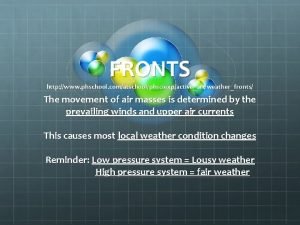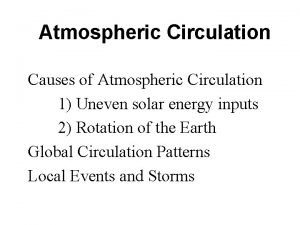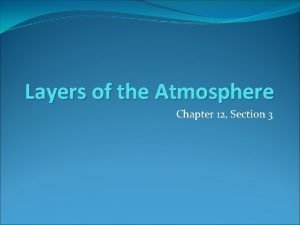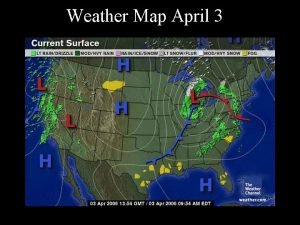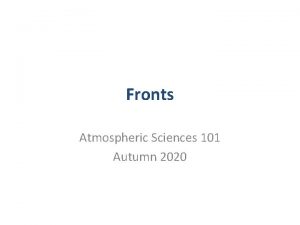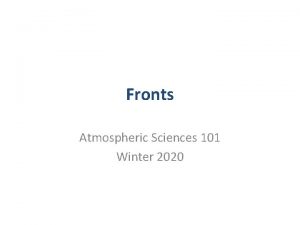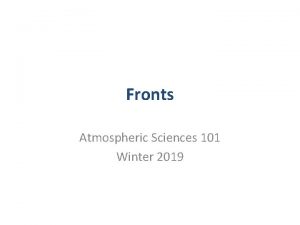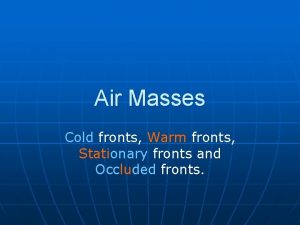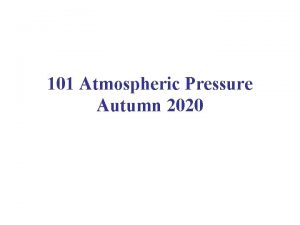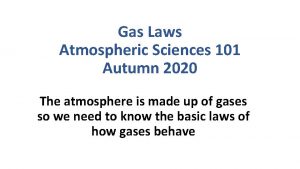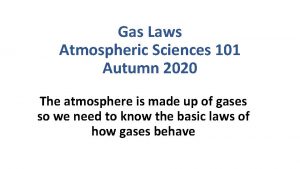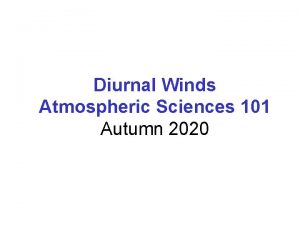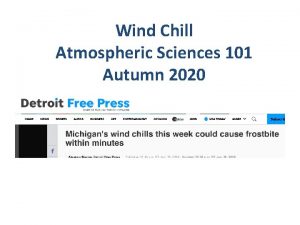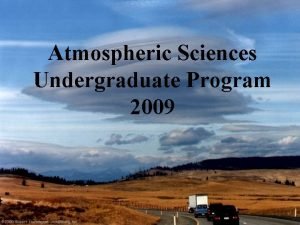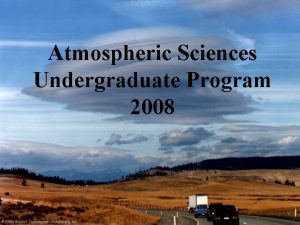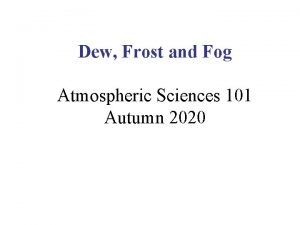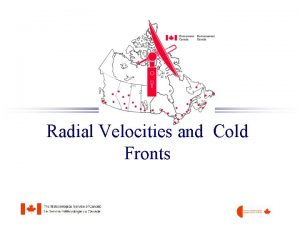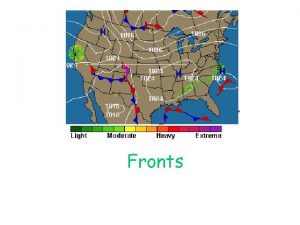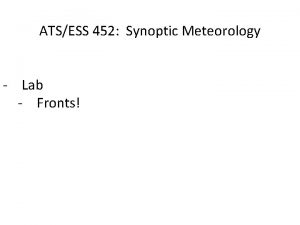Fronts Atmospheric Sciences 101 Autumn 2020 Refresher A











































- Slides: 43

Fronts Atmospheric Sciences 101 Autumn 2020

Refresher A front is a boundary between relatively uniform warm air and a zone in which temperatures cools rapidly


Four Main Types of Fronts

Warm Front

Stationary Fronts

Occluded Front (a hybrid)

As a front passes there are changes in: • • • Temperature Dew point Wind direction Pressure Cloudiness

Fronts are associated with troughs of low pressure


Fronts are associated with bands of clouds

Vertical Structure of Fronts

Cold Front • Slope 1: 50, moves fast (20 -30 mph), convection on leading edge

Warm Front • Smaller slope (1: 200), slower (1— 15 knots), more stratiform clouds

Stationary Front: similar structure to warm front, but without movement

There is a typical progression of clouds as cold and warm fronts approach and pass by • • • Cirrus Cirrostratus Altostratus Nimbostratus Cumulus after cold front







There is another type of front: the occluded front But to understand this front, you need to learn about the life cycle of fronts and cyclones.

For much of the 20 th century the dominant paradigm for cyclone/frontal evolution has been the Norwegian Cyclone Model (Bergen School) Bjernkes, 1919

Typical Midlatitude Cyclone And Fronts Warm Sector

Concept of Evolution of Cyclones Bjerknes and Solberg 1922

Stationary Polar Front Wave Forming on Polar Front

Wave Amplifies Occlusion as Cold Front Catches Up to Warm Front

Occlusion Lengthens and System Weakens

The Occlusion Process

Warm or Cold Occlusions? Cold Occlusion Warm Occlusion

In the real world, only the warm occlusion is observed

During the 1930 s-1950 s we learned the relationship between cyclones and fronts and upper level flow • Upper troughs associated with surface lows. Usually lagging to the west. • Upper ridges asociated with surface highs. Usually lagging to the west.


Active fronts are generally in front of (east of) upper level troughs

https: //atmos. washington. edu/~ovens/wxloop. cgi? h 500_slp+/-168//

What is the energy source of midlatitude cyclones?

The answer: warm air rising and cold air sinking

Warm (less dense) air rising and cold (more dense) air sinking lowers the center of gravity of the atmosphere • Like dropping a weight. • Potential energy (energy inherent in being aloft) is converted to kinetic energy (energy of moving air)

The conversion from potential energy to kinetic energy is enhanced by having large differences of temperatures (large horizonal temperature gradients)

No accident that cyclones grow in regions of large temperature gradients


 Why are cold fronts steeper than warm fronts
Why are cold fronts steeper than warm fronts Human science tok
Human science tok Object oriented programming exercises java
Object oriented programming exercises java Saeta refresher course 2021
Saeta refresher course 2021 Sql refresher
Sql refresher Rt 130 refresher
Rt 130 refresher Annual security refresher
Annual security refresher Confined space refresher
Confined space refresher Refresher training example
Refresher training example Vocabulary refresher group a answers
Vocabulary refresher group a answers Confined space refresher training
Confined space refresher training Annual security refresher training
Annual security refresher training Java refresher course
Java refresher course Hazmat training alaska
Hazmat training alaska Gdpr refresher training
Gdpr refresher training Radioactive refresher cocktail
Radioactive refresher cocktail Ifr refresher
Ifr refresher Biology refresher
Biology refresher Ipv refresher course
Ipv refresher course What is v/q mismatch
What is v/q mismatch Weather fronts symbols
Weather fronts symbols Fronts
Fronts Four types of fronts
Four types of fronts Air masses and fronts
Air masses and fronts Weather fronts animation
Weather fronts animation Air fronts
Air fronts Traditional drawer construction
Traditional drawer construction Beaufort scale
Beaufort scale Fronts and pressure systems
Fronts and pressure systems Air mass
Air mass Air masses drawing
Air masses drawing Fronts
Fronts Characteristics of fronts
Characteristics of fronts A pattern of meteorological symbols that represent weather
A pattern of meteorological symbols that represent weather Warm fronts
Warm fronts North american air masses
North american air masses Cold front
Cold front Warm front cross section
Warm front cross section Four types of fronts
Four types of fronts Fronts ph school
Fronts ph school Atmospheric convection
Atmospheric convection Section 1 atmospheric basics continued answers
Section 1 atmospheric basics continued answers Mapline of atmospheric pressure
Mapline of atmospheric pressure Penn state meteorology jobs
Penn state meteorology jobs












